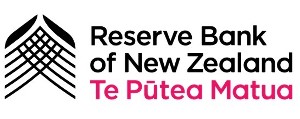
The clear consensus in the investor community is that the RBNZ will have to ease monetary conditions a lot earlier than it has been suggesting.
This is fully revealed in the fact that a rate cut in November of this year is fully priced.
While trading banks’ economists believe rate cuts will eventually occur sooner than the fourth quarter of next year as was indicated in the RBNZ’s May Monetary Policy Statement, they think the RBNZ will stick to its knitting this week.
They say the RBNZ will likely acknowledge that economic activity is faltering but continue to warn that it is in no rush to respond to that.
Importantly, say the economists, this is a Monetary Policy Review, not a Monetary Policy Statement so there will be no interest rate track for nervous financial market participants to focus on. It will simply be the words of the record-of-meeting that will inform market pricing.
The policy statement is expected to be brief and the main interest is likely to fall on the nuances, which might provide some insight into how the RBNZ is provisionally interpreting recent developments.
Next month’s Monetary Policy Statement will be a better steer of what the RBNZ is thinking. It will present updated projections for the economy and a refreshed track for the OCR and it will be the more likely vehicle for communicating any less hawkish stance – one more consistent, says Westpac, with its forecast of first policy easing in February next year.
Westpac says the Reserve Bank will probably emphasise the risks to consumer spending and inflation that could arise from the Budget, balanced out by the economy stalling and the labour market easing.
ANZ is also expecting an OCR cut in February but the risks are "tilting towards earlier." That will require some data points to come in much lower than Reserve Bank expectations. "That's not far-fetched but it's far from a fait accompli," Sharon Zollner, the bank’s chief economist says.
“The central bank will reiterate that it was in ‘watch worry wait’ mode, but the survey data that has come out since the last OCR update is on the side of interest rate cuts sooner.
"That is likely to be acknowledged in the review, but we doubt it's sufficient to bring about a meaningful change in policy rhetoric from the Reserve Bank," Zollner says.
Consumer and business confidence are extremely low and there is no obvious end in sight as activity is weighed down by tight monetary settings and soon, tightening fiscal conditions to boot, says Stephen Toplis, BNZ research head.
Weakness in the economy is being reflected in a deteriorating fiscal balance, a reduced external deficit and a rising unemployment rate, he says.
“It also means inflation, both core and headline, is in retreat. Eventually this will trigger a sharp drop in the cash rate but the RBNZ seems in no rush to move any time soon,” he says.
ASB economists have recently changed their outlook, expecting a cut in November rather than February as they previously forecast.
ASB chief economist Nick Tuffley says the dynamic is changing quickly this year and inflation indicators are starting to "soften with more alacrity".
"We are more confident that inflation will be comfortably back in the target band by year-end," he says.
"Households are starting to buckle more noticeably under the various pressures of high interest rates and high (though easing) living cost inflation.
"To date, the labour market has been a bit of a saviour, with employment holding up and wage growth relatively stronger. Even that story is starting to change, with cost-cutting pressures in organisations, wage growth slowing, and job security worries on the up."





Comments
No comments yet.
Sign In to add your comment